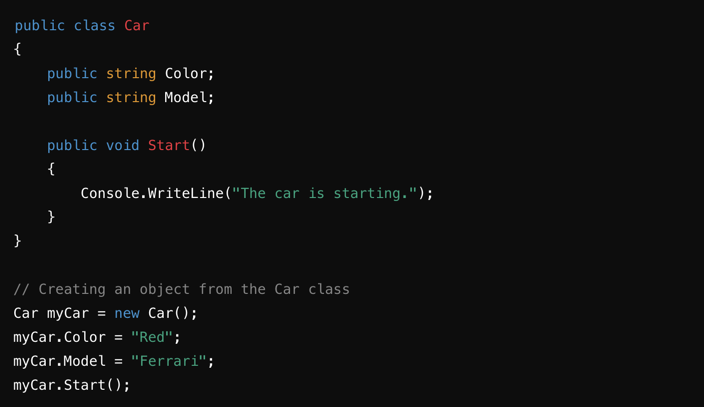Introduction to Object-Oriented Programming (OOP) for Beginners Part 1
Introduction to Object-Oriented Programming (OOP) for Beginners
11/10/20242 min read
Getting Started with Object-Oriented Programming: The Basics You Need to Know - Part I
If you're new to programming, you've probably heard about Object-Oriented Programming, or OOP, and wondered what it's all about. OOP is a way of organizing code that’s based on the idea of "objects" and "classes." This approach makes code more modular, easier to read, and better suited to solving real-world problems. In this post, I'll introduce the fundamentals of OOP, starting with some key concepts like classes and objects.
What is Object-Oriented Programming?
OOP is a programming paradigm that structures code into reusable "objects." These objects represent real-world entities, like cars, employees, or customers, making it easy to model complex systems in a way that’s intuitive and easy to maintain. By organizing code this way, developers can break down big problems into smaller parts, leading to code that's easier to manage, extend, and debug.
The Basics: Classes and Objects
To understand OOP, it’s essential to grasp the concepts of classes and objects.
Classes are like blueprints. Imagine the blueprint of a car. A blueprint defines the car’s components, like wheels, doors, and an engine. But the blueprint isn’t the car itself—it’s just a design. In code, a class defines the properties and behaviors of an object.
Objects are the real instances we create from the class blueprint. Using the car example, an object would be an actual car built from the blueprint. Each car might have unique features like color or model, but they all share the same fundamental structure defined by the class.
Here’s a simple example using C# to illustrate this:


In this code:
We define a Car class with properties Color and Model.
We create an object, myCar, and set its color and model.
Finally, we call the Start() method, which triggers a message saying, "The car is starting."
Why Use OOP?
Object-Oriented Programming brings several advantages:
Reusability: Once a class is created, it can be reused in various parts of your code without rewriting it.
Modularity: Classes allow you to organize your code into separate sections, making it easier to maintain and expand.
Real-World Modeling: Classes and objects allow your code to closely reflect real-world entities, making it intuitive to understand and build upon.
OOP in Real Life
Imagine you’re creating an application to manage a car rental service. You could have classes like Car, Customer, and Rental. Each of these classes would have specific properties and methods relevant to their role in the system, making it easier to build and manage the application over time.
Next Steps: Diving Deeper into OOP
Learning the basics of OOP is a great first step, but it’s only the beginning. In the next stages of your OOP journey, you'll explore other powerful concepts like:
Encapsulation: Protecting data within classes.
Inheritance: Creating new classes based on existing ones.
Polymorphism: Enabling objects to be used interchangeably.
Abstraction: Simplifying complex systems by focusing on essential details.
